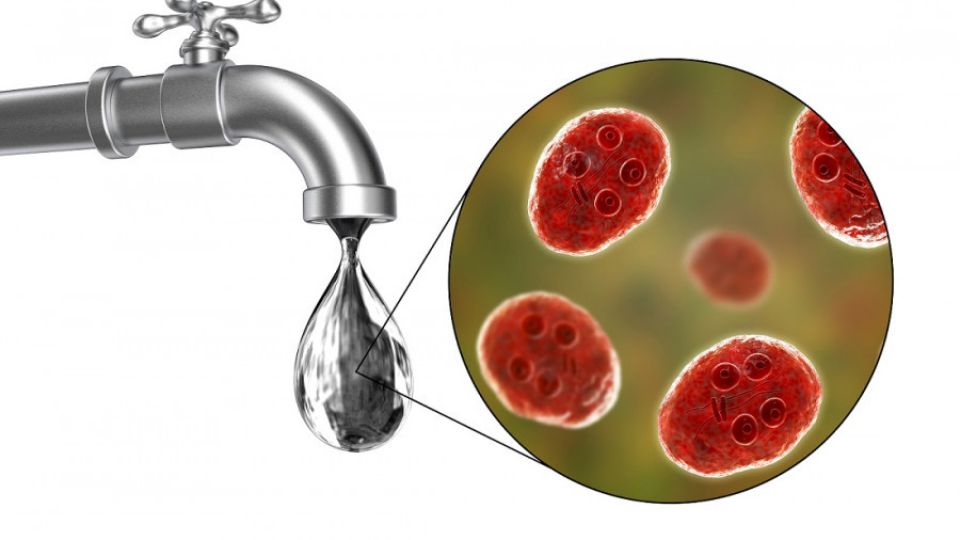June 17, 2022
KATHMANDU – Amid reports of rising cases of diarrhoeal diseases in Kathmandu, the Epidemiology and Disease Control Division is working to test water samples from various places of the Capital.
“We have decided to collect water samples from at least 150 localities of the Valley,” said Kaushal Subedi, a public health inspector at the division. “Water samples will be collected from distribution centres, bottling plants, taps, and households. We will also study if various brands of bottled water being used by the public are fit for drinking or not.”
Hospitals in Kathmandu Valley including the Sukraraj Tropical and Infectious Disease Hospital have been reporting an increase in diarrhoeal cases since the start of pre-monsoon rains over a month ago.
“Around 300 people have come to our hospital for treatment of diarrhoeal infections in the last two months,” said Nabaraj Gautam, information officer at the Sukraraj hospital.
“The actual number of people infected with diarrhoea could be several fold higher because normally only serious patients visit hospitals for treatment.”
The increase in rainfall and disruption in garbage collection in all three districts of Valley—Kathmandu, Lalitpur and Bhaktapur—increased the risk of contamination of drinking water sources.
A wetter than usual monsoon has been forecast this year.
Several other factors including the condition of water supply pipes, water storage, and pollution in water sources affect the quality of water supplied to households, officials said.
The Kathmandu Upatyaka Khanepani Limited still uses the old pipeline laid decades ago in core city areas. Since there are leakages in the old pipelines, there is a high risk of sewage mixing with drinking water. Although the KUKL chlorinates the water before supplying to households, it is still prone to contamination due to the leaking pipes.
“We will carry out tests to identify the exact causes and sources of contamination,” said Dr Anu Shakya, an official at the division. “We will also alert agencies concerned to take measures to mitigate contamination.”
Due to poor sanitation and hygiene conditions, Nepal is highly vulnerable to water-borne diseases including diarrhoea, dysentery, typhoid, hepatitis, and cholera.
During every monsoon, health authorities test water samples collected from various places throughout the country.
In the last year’s study, around 60 percent water samples from various sources in Kathmandu Valley—including bottled water sold in the market–were found contaminated with E.Coli and coliform, the microbes found in human feces that cause diarrhoeal infection.
The division had also informed the Kathmandu Metropolitan City, its ward offices, and Kathmandu Upatyaka Khanepani Limited and other stakeholders about the presence of hazardous microbes in the drinking water.
Experts say the responsibility of the authorities does not end merely by identifying the problems and treating the patients. They said that appropriate measures should be taken to prevent the spread of infections.
“Hospitals provide symptomatic treatment to patients which is necessary to save life,” said Dr Sher Bahadur Pun, chief of Clinical Research Unit at Sukraraj hospital, said. “But what should not be forgotten is people are getting infected and appropriate measures should be taken to prevent the spread of infections.”
Doctors say an awareness drive should be launched to bring behavioural change in the public to to practice hygienic habits including boiling water before drinking and avoiding stale food.
“Testing of drinking water should be carried out on a regular basis throughout the year and the public should be informed about the problems,” Meghnath Dhimal, chief researcher at the Nepal Health Research Council, said. “Without ensuring safe drinking water, we cannot get rid of the burden of waterborne diseases.”
Meanwhile, officials at the Health Ministry said that they have urged health agencies under provincial and local governments to test local water samples regularly.
“We have also provided testing kits to various districts to carry out tests,” said Subedi of the Epidemiology and Disease Control Division. “We are also planning to purchase reagents worth around Rs 1 million soon to supply them to provincial and local levels.”


